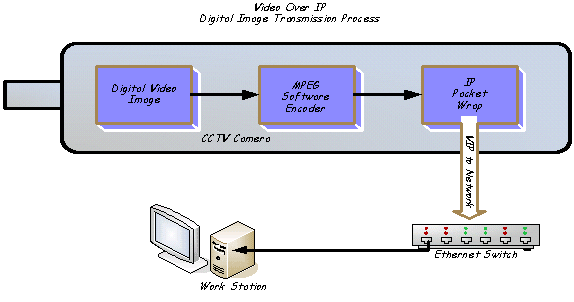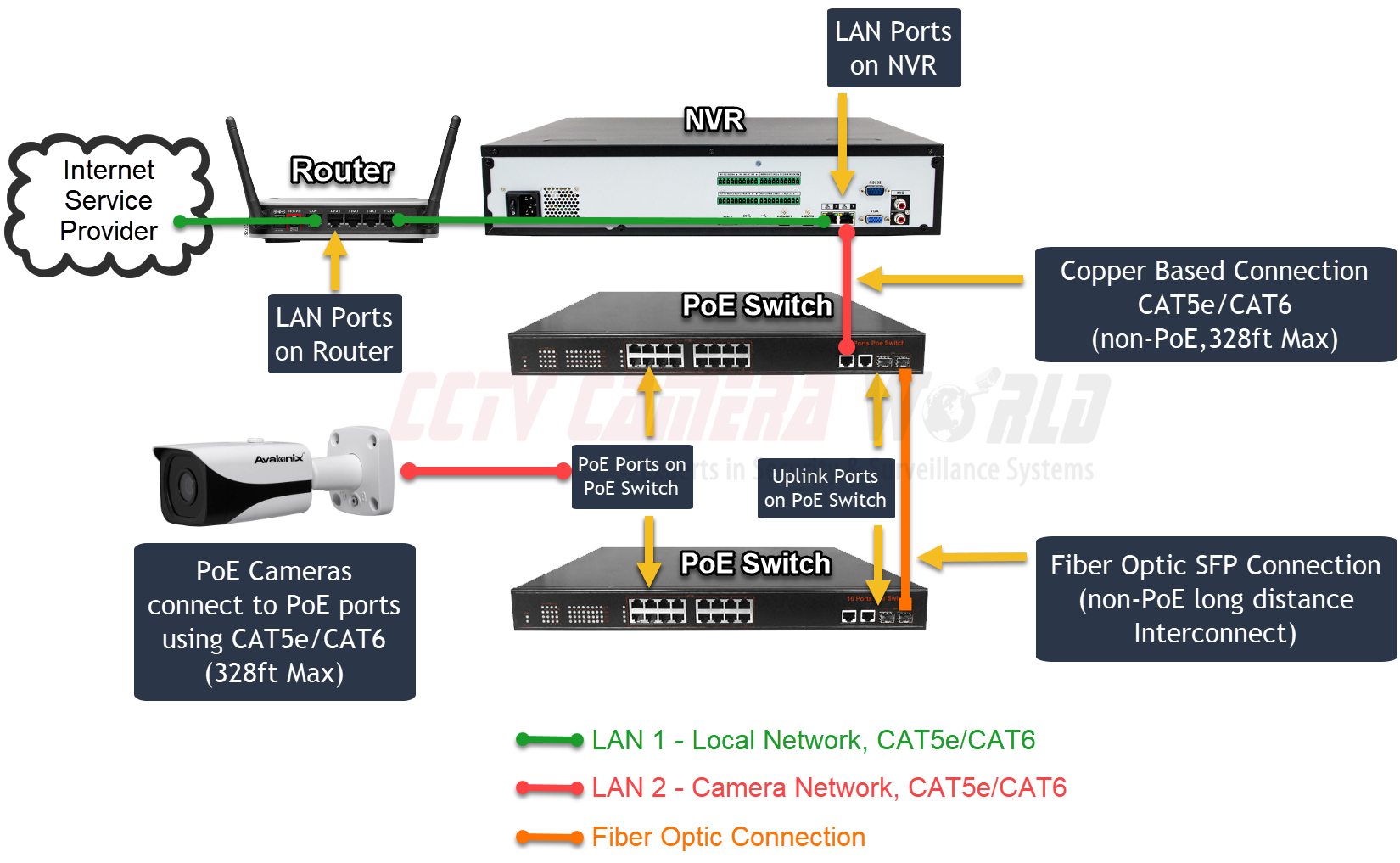Why a CCTV Camera with Fiber Optic Output Can Boost Surveillance Efficiency
Why a CCTV Camera with Fiber Optic Output Can Boost Surveillance Efficiency
Blog Article
Exactly How CCTV Cameras With Fiber Optic Result Boost Long-Distance Tracking
CCTV video cameras equipped with fiber optic result represent a substantial improvement in long-distance surveillance technology, supplying unmatched advantages over typical systems. By leveraging the buildings of light transmission with optical fiber, these video cameras ensure high-def video top quality remains undamaged throughout comprehensive ranges while effectively alleviating electromagnetic interference. This technology not only improves photo clarity yet also simplifies setup procedures and source allocation. As we discover the effects of this modern technology, one should take into consideration how these improvements are improving the landscape of safety and security and tracking systems in numerous applications.

Comprehending Fiber Optic Innovation
Fiber optic modern technology is significantly utilized in long-distance monitoring applications due to its extraordinary capability for information transmission. This innovation utilizes thin strands of glass or plastic fibers to send information as light signals, significantly reducing the attenuation frequently related to typical copper wires. The integral residential or commercial properties of optical fiber enable for the transmission of big volumes of data over substantial ranges without loss of high quality, making it a suitable option for applications requiring dependable interaction.
The concept of overall internal representation promotes the effective transmission of light within the fiber, guaranteeing high bandwidth and rate. Unlike electrical signals in metal cords, fiber optics are unsusceptible to electro-magnetic disturbance, improving the integrity of information transmission. This characteristic is particularly useful in atmospheres with high degrees of electrical sound, such as commercial settings or metropolitan areas.
Furthermore, fiber optic cable televisions are lighter and extra versatile than their copper counterparts, which simplifies installation and minimizes structural lots. With their toughness and resistance to environmental variables, fiber optics are appropriate for outdoor applications, consequently extending the reach of monitoring systems. As an outcome, fiber optic modern technology is ending up being a keystone in contemporary security services, properly dealing with the obstacles of long-distance monitoring.
Benefits of Fiber Optic CCTV
Using fiber optic modern technology in CCTV systems provides many benefits that enhance security capabilities. One of the main advantages is the capacity to transmit high-definition video over cross countries without substantial signal degradation. Unlike conventional copper cords, optical fiber can maintain video high quality over substantial runs, making them ideal for large residential properties or remote surveillance areas.
In addition, fiber optic cables are less prone to electro-magnetic disturbance, which can misshape signals in traditional systems. This makes sure more clear pictures and undisturbed solution, important for protection surveillance. Additionally, fiber optics are inherently more secure, as obstructing signals calls for customized devices, therefore offering an extra layer of defense versus unauthorized gain access to.
The lightweight and small nature of fiber optic wires additionally streamlines installation, enabling less complicated directing via limited spaces and lowering general labor costs. Their durability makes them immune to environmental variables such as wetness and temperature level variations, expanding the life expectancy of the surveillance system.
Last but not least, fiber optic systems can support a majority visit homepage of electronic cameras on a single network, maximizing resources and supplying scalability for future growth. These advantages make fiber optic CCTV systems a premium option for modern security needs.
Contrast With Traditional Solutions
When contrasting CCTV systems, conventional arrangements frequently drop brief in a number of vital areas, especially in regards to distance and signal stability. Traditional coax cable systems normally encounter significant signal deterioration over cross countries, restricting reliable monitoring varies to about 300 feet (cctv fibre optic cable). Yet threshold, picture quality diminishes, resulting in possible unseen areas and minimized monitoring performance
In comparison, fiber optic systems maintain signal integrity over much greater distances, commonly going beyond numerous miles without loss of top quality. This is greatly because of their capacity to send information as light signals, which are much less at risk to electro-magnetic disturbance than electric signals utilized in standard systems.
Additionally, conventional systems call for extra considerable upkeep and troubleshooting as a result of their susceptability to environmental elements such as moisture and electromagnetic sound. Fiber optic systems, alternatively, deal improved durability and lower maintenance expenses, as they are less prone to damages.
Applications in Long-Distance Surveillance
The advantages of modern CCTV systems in keeping signal honesty over fars away open a large range of applications for long-distance tracking. One substantial application is in urban security, where communities deploy fiber optic CCTV systems to monitor public rooms, improving safety and hindering criminal activity. These systems give constant, top quality video clip feeds that are vital for effective regulation enforcement and emergency feedback.
One more vital application is in commercial settings, where remote surveillance of manufacturing procedures and dangerous locations is important. Fiber optic CCTV can hold up against severe environments and transfer data over long ranges without loss of top quality, permitting real-time oversight and reducing dangers to workers.
In addition, crucial facilities such as flight terminals, railways, and pipelines take advantage of long-distance CCTV monitoring. Protection groups can oversee huge areas from systematized control areas, making certain quick response to any kind of incidents.
Furthermore, in agricultural settings, farmers make use of long-distance CCTV to keep track of plants and animals, aiding to boost efficiency and safety. Generally, the flexibility and integrity of fiber optic CCTV systems make them essential throughout various sectors, making it possible for comprehensive monitoring solutions customized to details needs.
Future Patterns in Surveillance Innovation
Exactly how will developments in technology improve the landscape of security? The future of security innovation is positioned for significant transformation, driven by advancements such as artificial intelligence (AI), artificial intelligence, and side computing. These innovations make it possible for real-time data evaluation, permitting for quick recognition of potential dangers and browse around this web-site boosted situational recognition.
AI-powered analytics will my blog boost the precision of face acknowledgment systems, reducing incorrect positives and allowing a lot more reliable monitoring of people. The combination of Internet of Points (IoT) tools will promote a smooth network of interconnected security systems, improving tracking abilities throughout large locations.
An additional pattern is the shift in the direction of cloud-based storage services, which supply scalable data monitoring and ease of access. This will certainly permit organizations to store huge quantities of video information without the constraints of physical storage space, while ensuring that information is conveniently retrievable.

Verdict
To conclude, CCTV cameras equipped with fiber optic outcome represent a considerable development in long-distance tracking abilities. The application of fiber optic innovation ensures high-def video clip transmission over extensive ranges without high quality destruction, while also offering immunity to electro-magnetic disturbance. The lightweight and flexible nature of these systems assists in streamlined setup and resource optimization. As surveillance modern technology remains to progress, the fostering of fiber optic services will likely play a pivotal function in enhancing safety and security throughout diverse applications.
Report this page